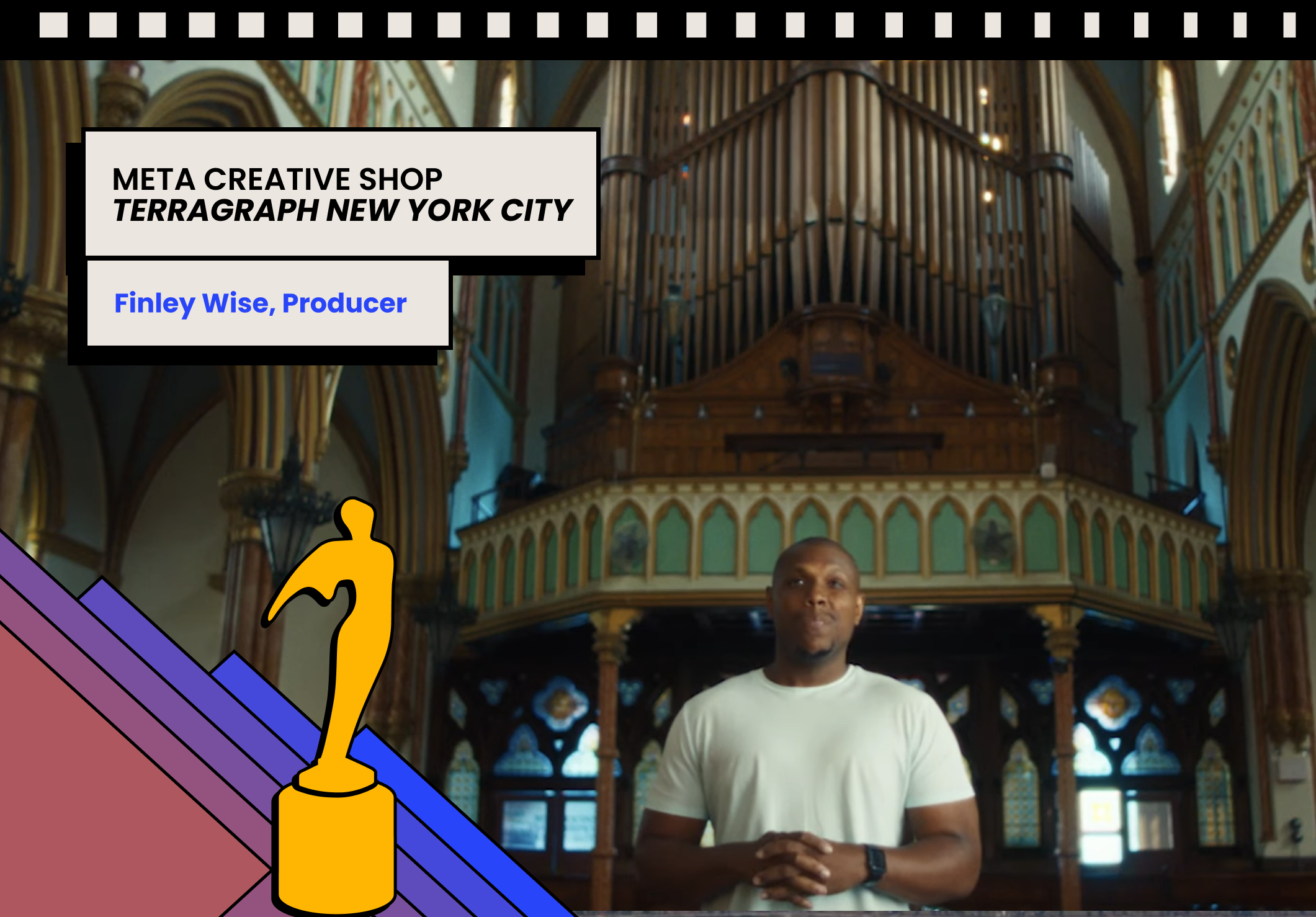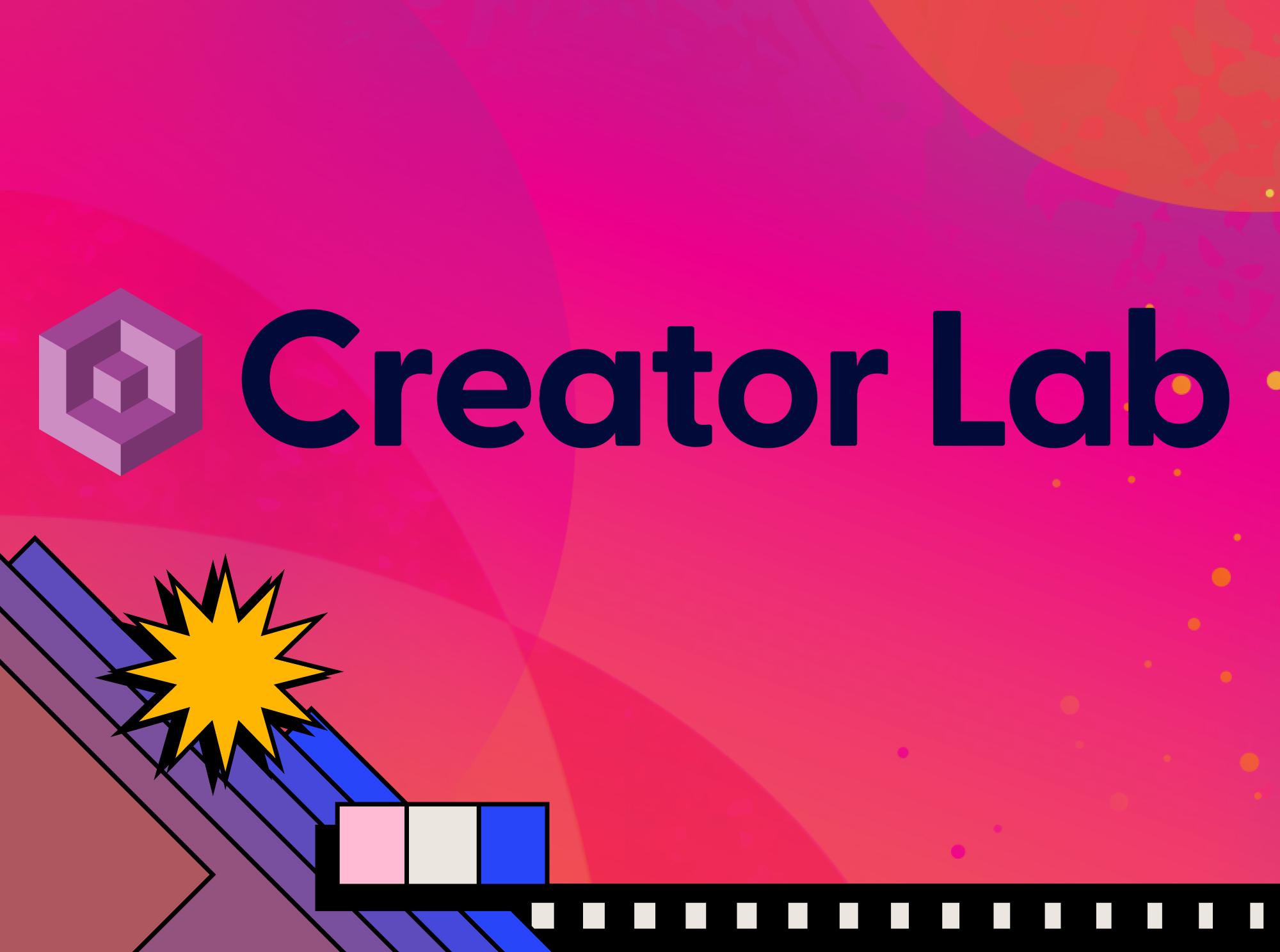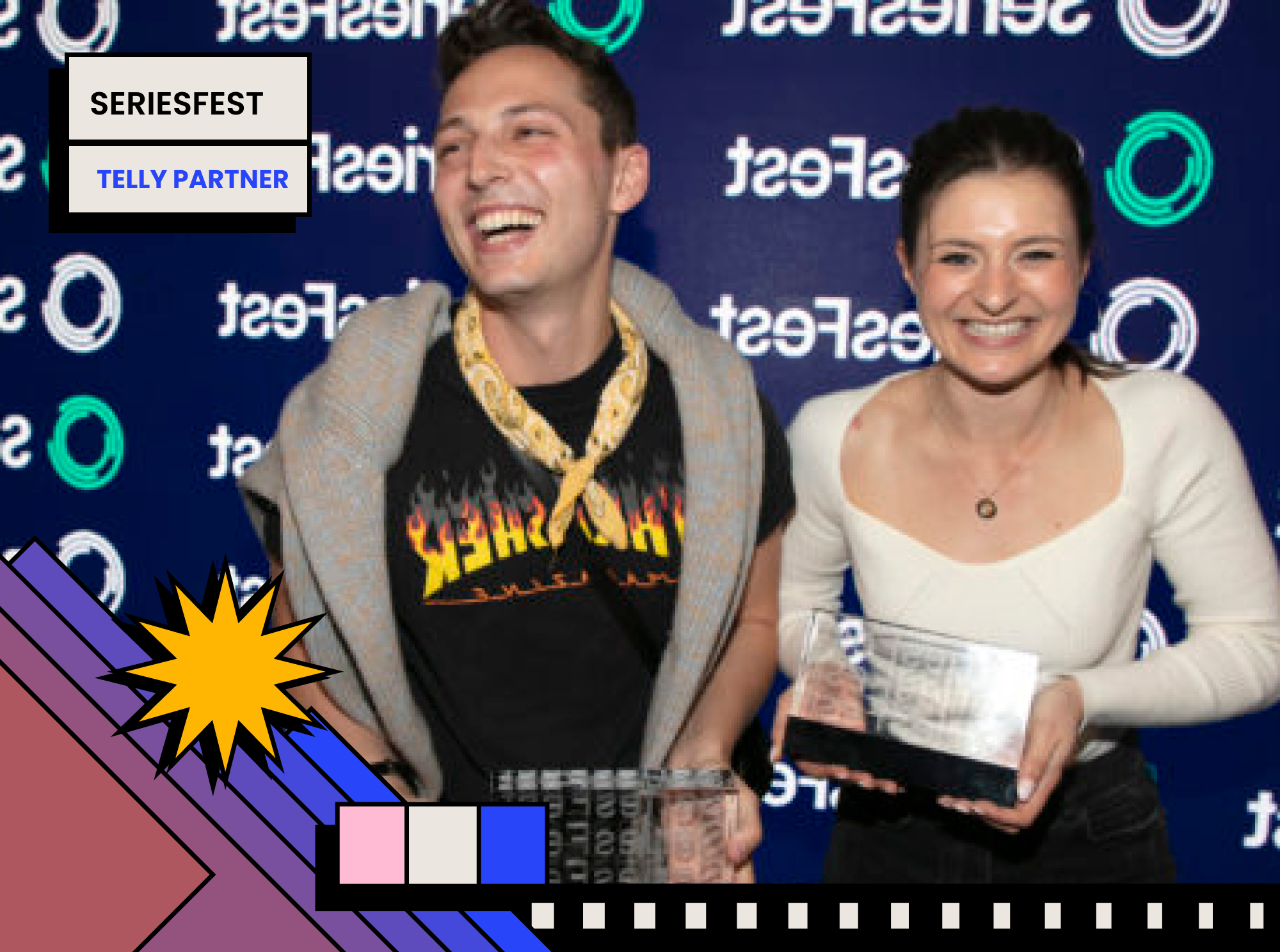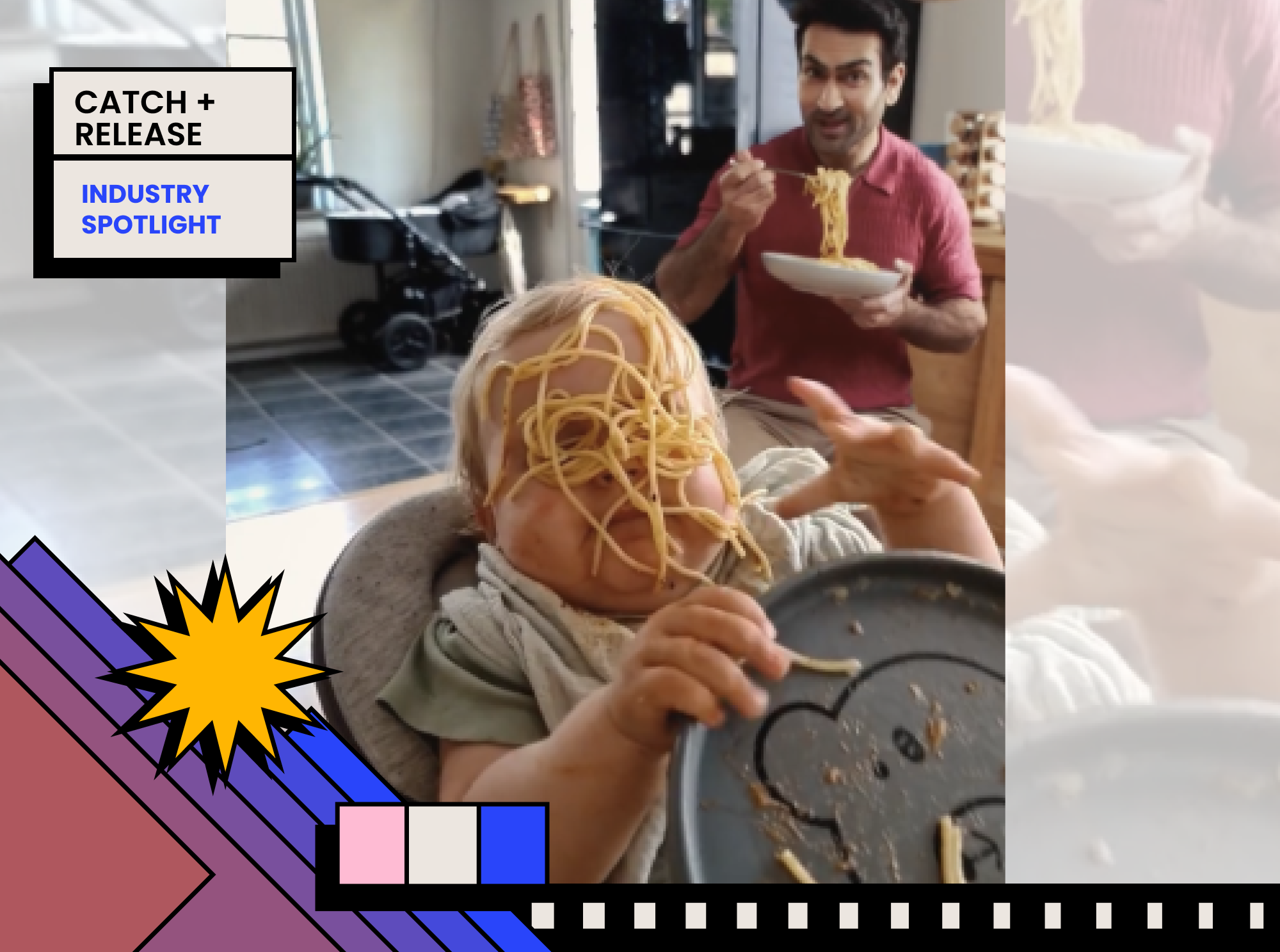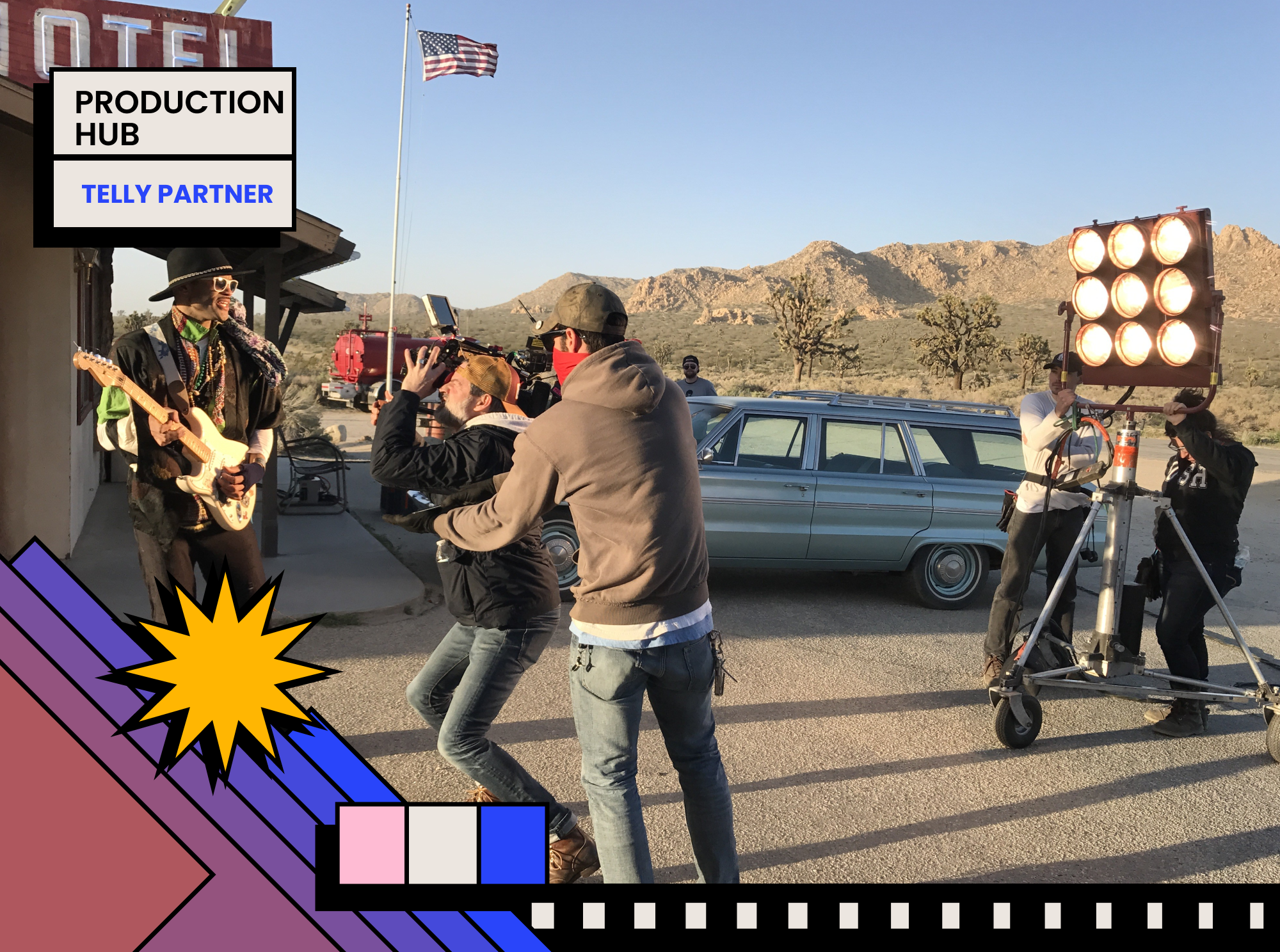Meet Telly Award winner Finley Wise, Executive Producer at Meta. Finely’s campaign Terragraph New York City” for Meta Connectivity swept the Branded Content category of last year’s Telly Awards. We spoke with Finley about sourcing locations in NYC, producing documentary-style branded content, and what that massive win last year has meant for him and the Meta team.
You were able to win Gold, Silver and Bronze Tellys for your Meta Connectivity campaign “Terragraph New York City”. Tell us about how this project came to life and how it feels to have swept the Branded Content media type.
Emerging from the pandemic, I think everyone— on every continent, in practically every neighborhood on the planet— realized the importance of connectivity, and the stark inequality of broadband access separating people and businesses and cities alike, even entire countries. It’s not an exaggeration to say that we literally could not have survived the last few years without a basic Internet connection. This spot came about in that tumultuous, post-emergency atmosphere, from that understanding.
The need from Meta was to vocalize to internet service providers (ISPs) and equipment manufacturers (OEMs) worldwide that Terragraph’s wireless technology can provide a path to better, faster connectivity for everyone— regardless of geography— and not just in some distant “metaverse”, but today. When the idea was first floated to me of documenting this campaign, I immediately reached out to Steve Wi, the owner of Raucous Content and an incredible EP friend with whom I’ve collaborated on some really emotional work over the years. Teaming up with Steve and my Comms partners at Meta, I was able to lay the foundation for the production by reaching out to a number of service providers in New York City who were already deploying Terragraph there successfully. All of the conversations seemed to point towards a startling lack of Internet penetration in many of New York’s most densely-populated neighborhoods. So we came up with a plan to showcase how Terragraph was making a tangible impact in those exact places–– Brooklyn and Harlem, in particular.
From inception to camera wrap, the project took more than a year—and then another couple months of post and stakeholder approval gamuts. So like most productions, it’s been a real journey! I think that’s one of the reasons why winning these Telly Awards and sweeping the Branded Content media category has been so remarkable. To look up and see that our hard work not only reached audiences, but was recognized for its artistic merit— and across a number of different categories— that’s a testament to the team we put together, effective collaboration with great partners like Steve and Raucous, and the underlying importance of the message. Internet really has become the 5th utility! A basic human right. It’s that essential.
As a Producer for doc-style branded content, it is imperative to find talent that both represent the real and authentic experience of the community the brand is trying to highlight while also being able to deliver the brand’s message to the viewing audience. Can you tell us about your approach to casting talent for this piece?
You’re so right! When you take a step back and look at documentary work like this, there’s no script to follow and the people we’re featuring are not actors. Being on camera is incredibly hard for anyone, and audiences are savvy–– they sniff out inauthenticity immediately. So we couldn’t just put sound bites in our interviewee’s
mouths. We had to find real people who were willing to help us tell this story in their own words. Full credit for our approach to casting goes to my director, Morgan Wise. Morgan started with the idea that we weren’t just finding “talent”. We were finding true New Yorkers who were unabashedly proud of their city and genuine members of their communities. We weren’t going to ask them to blindly sing Meta’s praises, either. They could speak their minds, for better or for worse, even if it meant being brutally honest about the company commissioning the video! Anything less than that just wouldn’t be true to New York. So before we even began to think about crews or cameras, my director began reaching out to community groups that had special resonance for us— in Harlem, Red Hook, and Brooklyn— to see who would be interested in speaking with us about connectivity in the modern age; who would have the energy and confidence to be a part of this story. Not everyone said yes, of course!
What’s remarkable— though maybe not too surprising given how marvelous New York is— is how many of our cast members we met just by walking through the city. One of the most phenomenal personalities we met was Fatima Ndiaye, a new graduate of Syracuse University. We were scouting in Harlem and we looked up and saw Fatima sitting on the steps of her family’s apartment. Our wonderful line producer recommended we speak with passersby. So we walked up to Fatima and started talking with her— we even met her father— and she was just so free and open and kind. There was an immediate human connection there, and we knew we had to feature her in some way. That’s kind of a microcosm for our casting approach. We didn’t have the funds for a traditional casting director, so we had to rely on ourselves and utilize simple human outreach. Taking the time to talk with people, hearing from people (more voices than could possibly make the final cut!), and finding the people who could help us weave this story together, piece-by-piece.
New York City is its own character within this piece. Tell us about what went into sourcing locations and picking the right backdrops for the piece.
One of our biggest challenges finding good locations was that everyone knows New York. I’ve worked and filmed in New York a ton over the years, and it was the same for Steve at Raucous. My director studied at NYU and has roots in the city. So we were all very familiar with our shooting environment in our own ways. There are just so many iconic visual emblems in The City. Morgan’s overarching direction was for us to be grounded in the boroughs where connectivity issues are most prevalent, and to find fresh, new ways of visualizing the character behind those iconic locales. During pre-production, Morgan also generated a giant locations wishlist full of places that felt interesting and unique and different to him. From there, we worked with David Marks— one of New York’s most committed and affable Line Producers— to secure the environments that made the most sense creatively, financially and logistically. That meant reaching out to communities in neighborhoods like Bedford-Stuyvesant, Sugar Hill, and Crown Heights. Once we had our locations in hand, we worked with our incredible cinematographer, John Matysiak, to gently frame details of New York in ways that felt fresh and distinctive. It seems like a truism that documentaries live on the
strength of their B-Roll and that filmmaking is a collaborative art form, but I think it’s a testament to my production team’s creative work–– and John’s cinematography–– that we were able to source and capture locations in ways that provided so much texture for the final cut.
This piece does a great job at speaking to the benefits of Terragraph in a way that does not feel as if the audience is being “sold” on a product. How do you balance creative executions with delivering a compelling message within branded video?
Thank you! :) From the get-go, my director’s guidance was to consciously avoid the parroting of any talking points. Morgan and I both loathe heavy-handed corporate advertising that hits you over the head with a “message”. And it always feels disingenuous to us when a brand tries to tell audiences exactly how great it is. Which is why branded, docu-style filmmaking can be such a challenge! Almost by definition, there are two competing forces at work: the commercial entity behind the project, and the craftspeople actually building it for an audience— representing the polar opposites of art and commerce. We were able to strike a balance with this video due in part to the key creative and production partners I keep mentioning. But I was also really lucky to work with great cross-functional partners at Meta, too–– like Michael Fletcher–– who instinctively knew the value of speaking honestly about the technology underpinning this release. Fletch was willing to be bold and to eschew traditional marketing speak. That kind of gutsiness and human-centered frame of mind is pretty rare in Big Tech. It gave us the space to make a film that didn’t have to “sell” anything and that simply worked on a human scale. My director and I could focus the majority of our energy on generating a compelling narrative with emotional impact. We had the creative freedom to find performances and imagery and music that had vibrancy and soul. Our client-partners didn’t push back on many of our creative decisions. They trusted us to make discoveries, to let the truth exist in sound and image, and then to let those discoveries shape a broader message with some actual depth behind it.
What was the most challenging part about this production and how did you and your team overcome this?
I don’t think I’ve ever produced a project that hasn’t, even in some tiny way, experienced a challenge to hurdle. It’s Murphy’s Law! It’s also one of the great thrills of producing to solve those problems, in real time. (And I do find that there’s always a solution, just around the corner…). On this particular shoot, limitations of time and light became some of the biggest pressure points we faced. My crews on documentaries rely largely on available, natural light— especially when shooting outdoors. That means dealing with the confines of a limited window of light availability. On our last production day, we were crunched up against a fading sun and had one remaining company move all the way across town to capture the very last pieces of our vital B-Roll from a vantage point high above Hudson Yards. One of our crew members was tired from a long shoot day, dragging their feet and taking so many cigarette breaks that it threatened to derail the
last setup. Thankfully, our brilliant cinematographer, John Matysiak, and our Line Producer, David Marks, were nimble and unflappable enough to rise to the occasion and move quickly on their own. And you can see it: some of the most exquisite imagery we captured were shots of the Manhattan skyline in the waning moments of our last day, seconds before we had to wrap. John pulled his own focus and David pushed the camera cart. Good scheduling, lots of patience, and a little equanimity in the face of pressure made that imagery happen!
The project has a social impact element to it. What research was needed prior to going into production and how did you do your due diligence to represent the impacted community in an ethical way?
This is definitely the most important and insightful question of the conversation! And I hope that in attempting to address the social impact element of the project I don’t just sound like I’m pandering. Because the truth is that from day one we viewed representation as both fundamental and also very much something that needed our conscious attention— and intention. It takes disparate perspectives to make good art, so we purposefully considered inclusion and understanding at every juncture of the production process, especially early on. A major component of my producing approach is the building of genuine trust and genuine fraternity. Which is why my production partners and I tried to arrive in New York a few weeks before principal photography, to introduce ourselves and do actual, boots-on-the-ground community outreach, always with an acute and expanding awareness of the inequities tearing at the sometimes threadbare fabrics of the communities we were about to portray on camera. A big part of that started in the opening weeks of prep: having conversations with potential on-camera talent, as well as with community leaders (and amongst ourselves as a film team) to identify the lived experiences of every member of the production so that we could discover which POV’s were missing and then purposefully seek them out. That meant doing work before the work. Before even thinking about permitting locations, we needed to permit the conversation itself.
Because we were talking about supporting under-resourced neighborhoods and bridging large technological divides, we also set out to capture diverse perspectives (on camera) by a film crew (behind-the-camera) who either lived in the same places we were filming, or at the very least looked like the people we were interviewing. On the latter goal, we actually fell quite short and need to do better next time.
Sometimes the most important job a producer has is to simply ask for humble permission to listen and to begin a dialogue, to ensure that our cast and crew understand the implications of our work, and to question the questions before rolling the camera. It’s an ongoing process, and one to which we are committed for good.
What does winning a Telly Award mean to you?
Producing can so often be this momentary, transitory thing— a brief project that lives
and breathes only for a short time when the camera’s turned on (or, if I’m lucky, for the duration of a short commercial campaign). What usually happens is that as soon as I’m onto a new gig, there’s a forgetting of the collaborations that were so fundamental to the creation of the previous work. So to take a moment with the Telly Awards and to pause for just a second— to look back and appreciate the craft that went into these images and these moments and these memories instead of just moving on immediately to the next thing— it’s unbelievably gratifying. It means a lot to have the opportunity to meditate a little on our collective art. It feels like the Telly Awards are a vehicle for that kind of reflection, not to mention the all-important recognition of a job well done, and that’s something I’m profoundly grateful to be part of. Thank you again.

